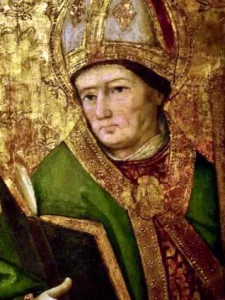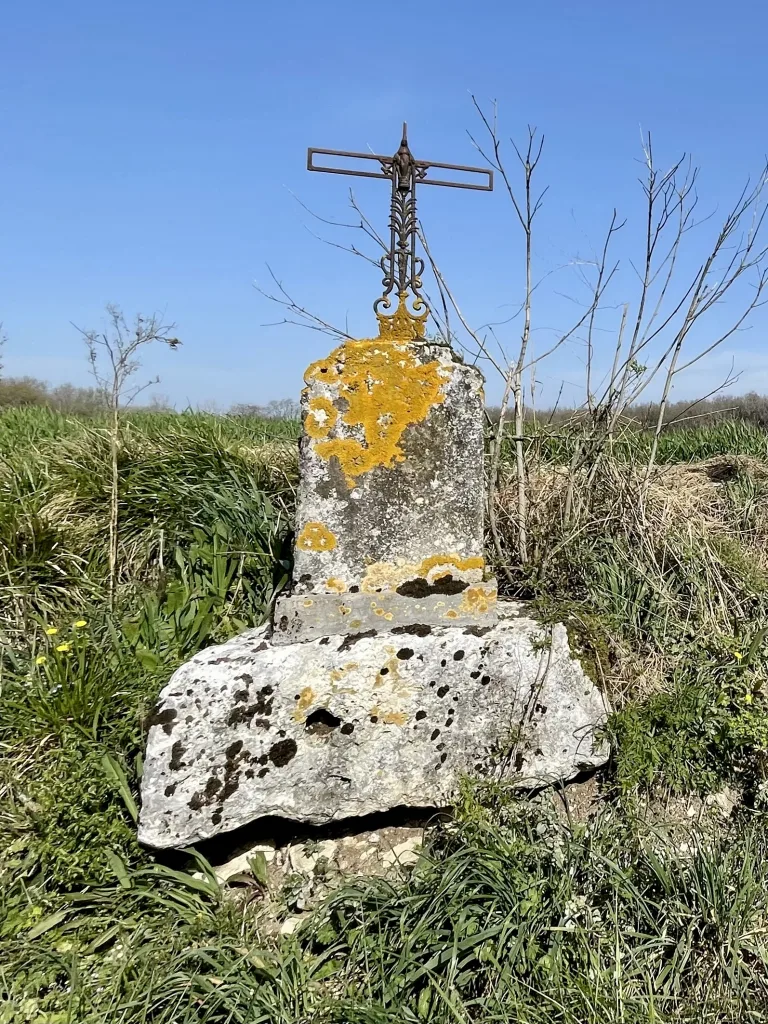When we found our holiday home, it was already known as ‘Saint-Blaise’ in the area. In fact, for a long time, it was the primary way to find our location (until 2023, when we received an official address). It’s quite charming to have a name with some history behind it.
We still have name signs from one of the previous owners stating ‘X Saint-Blaise’.
The house got its name from the commune called ‘La Croix de Saint-Blaise’, where our holiday home resides, nestled within Rampieux. Now, ofcourse we were curious who exactly was Saint-Blaise, and what got him his fame in the past.
The Story of Saint Blaise
The tale of Saint Blaise goes back to the 3rd century in Armenia, where he lived as a healer and bishop. He was renowned for his ability to heal the sick. Even animals sought his remedies.
Legend has it that he performed a miraculous feat by getting food unstuck in a child’s throat. This eared him a widespread adoration throughout the region. Despite being later apprehended and beheaded by Roman soldiers, his legacy endures through the multitude of places bearing his name. His feast day falls on 3 February.
There are several stories known about him. Some accounts narrate how Saint Blaise fled to evade persecution, seeking refuge in a mountain cave where he lived amidst wild animals until his discovery and eventual imprisonment. On his way to captivity, Saint Blaise encountered a mother whose son was choking on a fish bone. He cured the boy and, as a thank you, the mother brought him candles to illuminate his prison cell.
And another version recounts how Saint Blaise encountered a woman whose pig had been seized by a wolf; he commanded the wolf to return the pig, and the thankful woman supplied candles for his cell.

During his imprisonment, Saint Blaise refused to renounce his faith despite severe beatings with wool combs, and was ultimately being beheaded. Posthumously, he was canonized as a saint and became the patron saint of wool combers, wild animals, candle makers, and throat ailments.
La Croix de Saint-Blaise Rampieux

In France, several places (f.e. churches) carry names that refer to Saint Blaise, such as St.-Blais sur Loire, St.-Blais des Bois in Deux Sevres or St.-Blais sur Mer in Finistere.
Centuries ago, locals often marked significant locations or events by constructing crosses, in this instance, in reverence to patron saint Blaise. One of these crosses eventually lent its name to a small commune La Croix de Saint-Blaise.
This commune is nestled within Rampieux, an area inhabited since prehistoric times.
Our holiday home Maison Saint-Blaise is situated between Rampieux and Monpazier and just around the corner of this commune.
What exactly motivated people centuries ago to take on his namesake for places we don’t know, but these kind of stories add to the historic vibe of Dordogne.

